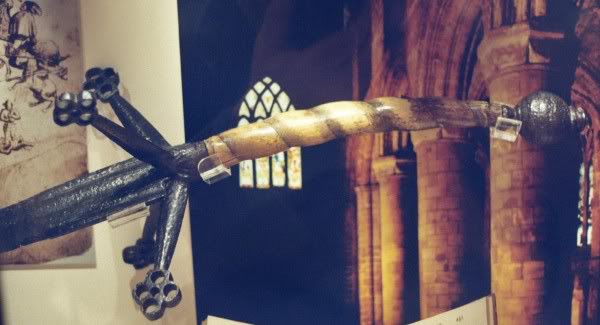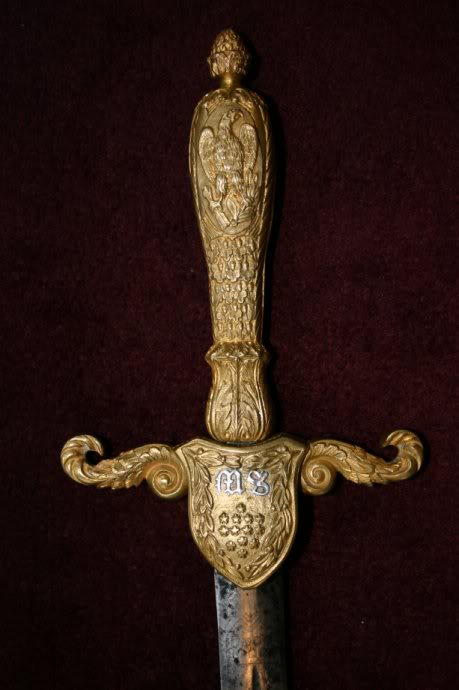Although I prefer simple and functional furnishings on swords, it is interesting to see the more bizzare looking specimens that appear to have actually existed historically.




| Michael B. wrote: |
| Don't know where I pulled this from, maybe someone on this forum, if it was, please let me know so I can write it down on the file, thanks.
Not exactly a longsword per se, but this is a claymore in the Edinburgh Museum. (Musuem Replicas by the way just released a poor copy of it). |
| Nathan M Wuorio wrote: |
| It does seem quite odd to leave off something that significant. Perhaps to save money? Or maybe we'll never know. |
| Michael B. wrote: |
| Don't know where I pulled this from, maybe someone on this forum, if it was, please let me know so I can write it down on the file, thanks.
Not exactly a longsword per se, but this is a claymore in the Edinburgh Museum. (Musuem Replicas by the way just released a poor copy of it).  |
| Peter Lyon wrote: |
|
I tried to reply to this a few days ago, but it seems to have got lost somewhere. I had a chance to view and photograph this sword last September at the National Museum of Scotland in Edinburgh. The card with it says it was reputed to have belonged to Robert the Bruce but is actually 16th century. Myself, I still can't believe it, it is just wrong to my eyes. The four quillons for a start, but also the Narwhal tusk grip would make it unique among claymore that I have seen (and I have now seen and even handled a good portion of the 30 or so genuine ones in esistance). The proportions are very chunky and it would be a heavy sword to try fighting with (not to mention braining yourself on the quillons), but really a bit small to be a bearing sword. Also the patination is very heavy and even, which causes me further suspicion. The curve in the grip is due to the tusk distorting over time (perhaps being displayed too long before it came to the museum with sun or heat on one side?) and the tang is actually snapped inside the grip (got that from a curator). |
| Chad Arnow wrote: |
| Jean,
In the pictures of the weird claymore, the fourth quillon casts a shadow of its own, so it can't be a shadow. Descriptions that have been published refer to it as having 4, not 3, quillons. |
| Marton Pap wrote: |
|
The sword of king Ulaslo II (Hungarian National Museum) Note the dolpin crossguard There is a good picture of it in the book Temesváry: Kardok |
| Ally Barnes wrote: |
| Because of your diligence we see the original had in fact 4 quillons which we verified. We have stopped production and are making the correction; we will re-introduce this item hopefully later this year. |